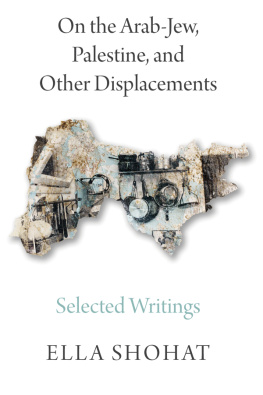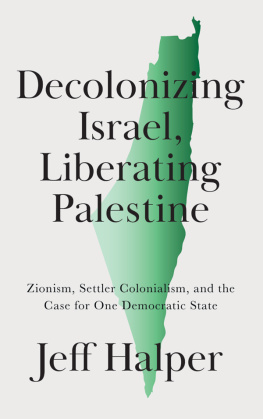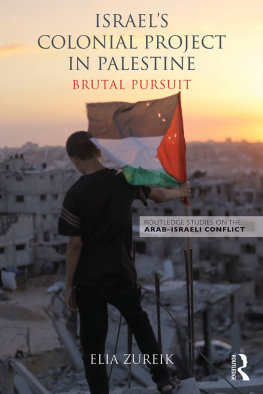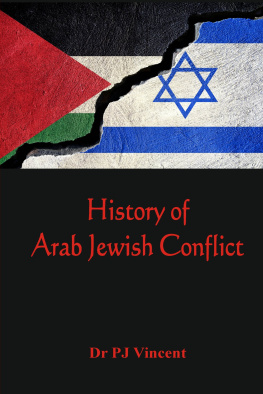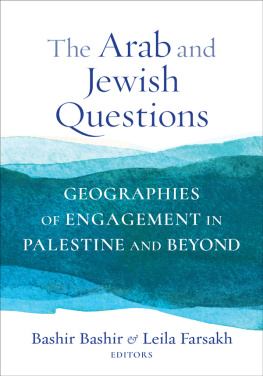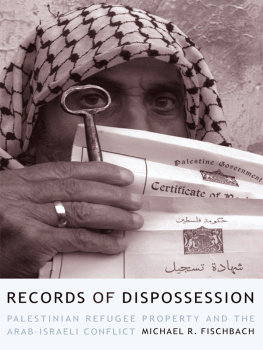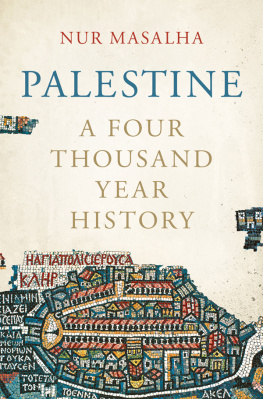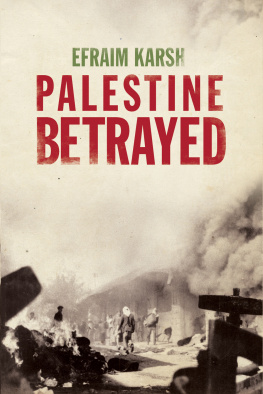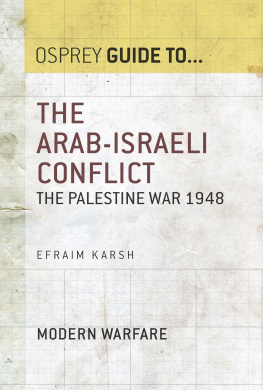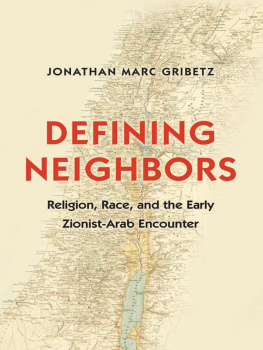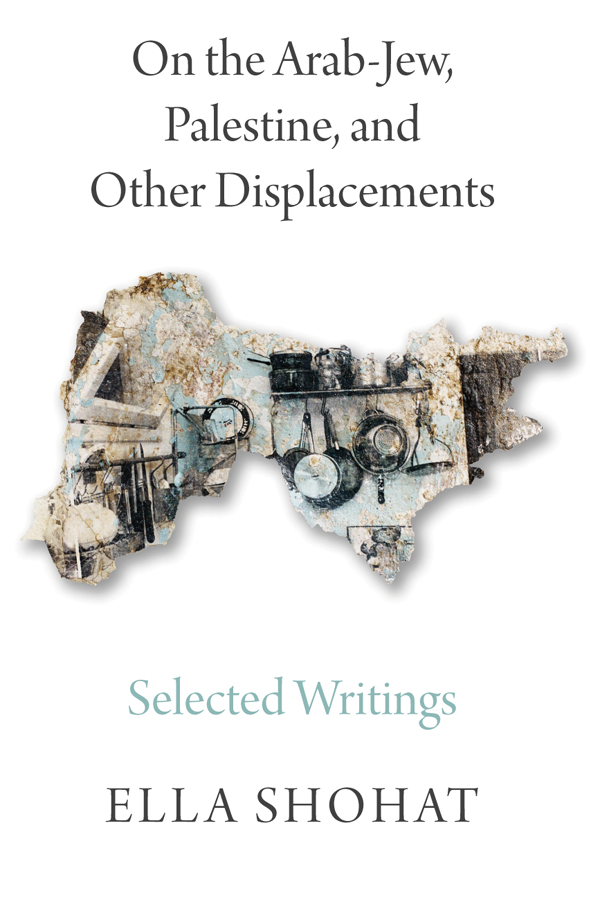On the Arab-Jew, Palestine, and Other Displacements
On the Arab-Jew, Palestine,
and Other Displacements
Selected Writings
Ella Shohat

First published 2017 by Pluto Press
345 Archway Road, London N6 5AA
www.plutobooks.com
Copyright Ella Shohat 2017
The right of Ella Shohat to be identified as the author of this work has been asserted by her in accordance with the Copyright, Designs and Patents Act 1988.
Every effort has been made to trace copyright holders and to obtain their permission for the use of copyright material in this book. The publisher apologises for any errors or omissions in this respect and would be grateful if notified of any corrections that should be incorporated in future reprints or editions.
Cover art:
Steve Sabella
38 Days of Re-Collection, 2014
27.4 47.8 cm
B&W white film negative
(generated from a digital image)
printed with b&w photo emulsion spread on color paint fragments collected from Jerusalems Old City house walls.
Margherita Berloni Collection
Middle East Studies / Cultural Studies / American Studies / Postcolonial Studies
British Library Cataloguing in Publication Data
A catalogue record for this book is available from the British Library
ISBN 978 0 7453 9950 8 Hardback
ISBN 978 0 7453 9949 2 Paperback
ISBN 978 1 7868 0047 3 PDF eBook
ISBN 978 1 7868 0049 7 Kindle eBook
ISBN 978 1 7868 0048 0 EPUB eBook
This book is printed on paper suitable for recycling and made from fully managed and sustained forest sources. Logging, pulping and manufacturing processes are expected to conform to the environmental standards of the country of origin.
Typeset in the United Kingdom
Simultaneously printed in the United Kingdom and United States of America
In Memory of Naeim Khlaschi Giladi and Tikva Amal Levi
Contents
List of Illustrations
Acknowledgements
I am profoundly grateful to Commissioning Editor David Shulman at Pluto Press for initiating this project five years ago and for his enthusiastic and active role in shaping this collection throughout its various phases. The team at the Press, especially Robert Webb, Melanie Patrick, Emily Orford, has provided indispensable help, and has been patient despite setbacks on my end. Some of the pieces included in this book are the result of stimulating dialogues taking place over the years. I wish to express my warmest appreciation to my different collaboratorsco-authors, interviewers, and intervieweeswho readily consented to publish our shared texts in this book, namely: Evelyn Alsultany, Layla Al-Zubaidi, Regine Basha, Manuela Boatc, Srgio Costa, Yerach Gover, Christian Hller, Rashid Khalidi, Richard Porton, Michael Rakowitz, Rasha Salti, Robert Stam, and the Jadaliyya team. Special thanks go to the editors at the Culture and the New Texts Out Now sections, Sinan Antoon and Anthony Alessandrini, as well as Ibtisam Azem, Bassam Haddad, and Sherene Seikaly.
I wish to thank the various editors of the journals, books, and Internet sites for kindly granting permission to reprint the pieces included here. The long list of names and original sources is respectively credited at the bottom of the first page of each text throughout the book. But I would like to distinctly note the following colleagues at the journals: Middle East Report (MERIP), especially Joe Stork and Chris Toensing; the Journal of Palestine Studies, especially Joseph Massad and Linda Butler; and Social Text, which was the home for many of my writings and collaborations since the 1980s, including with Patrick Deer, Brent Edwards, Stefano Harney, Anne McClintock, Timothy Mitchell, Fred Moten, Aamir Mufti, Gyan Prakash, Bruce Robbins, and Andrew Ross. I wish to pay tribute to the memory of editorial members: the late Randy Martin, Juan Flores, Neil Smith, and Jos Muoz.
This book project required a major effort of converting scanned publications into Word. (Some of the texts included here were actually written before the age of the word processor.) The digitizing was made possible in part thanks to Tisch School of the Arts Deans Faculty Grant at New York University. I would like to warmly thank Allyson Green for her support. The process of preparing the manuscript for print was greatly facilitated by the assistance received from various colleagues, students, and staff at NYU. I am immensely grateful to Sally Weathers for her dedication and generosity, as she did thorough and invaluable work on the many diverse tasks associated with the project over the past two years. The process was technically cumbersome due to inevitable mistakes occurring during the conversion of the scanned materials to Word. In the last stage of copyediting, the manuscript greatly benefited from the unfailing commitment and superb and meticulous work of Jennifer Shutek. I am also appreciative of the work performed over the past few years by the research assistants in the Culture and Representation track at the department of Middle Eastern and Islamic Studies, especially Shimrit Lee for her painstaking proofreading of the digitized text; and my thanks as well to Ilker Hepkaner and Jennifer Varela. And my colleagues in the track, Asli Igsiz and Helga Tawil-Souri, have made the collaboration all the more meaningful. I wish to express as well my sincere indebtedness to Kathy Engel as well as to Emily Brown from the Art and Public Policy department, NYU, for their reliably warm support on so many levels.
To visual artist Steve Sabella, who graciously agreed to have his evocative artwork 38 Days of Re-Collection (2014) on the book cover, I extend my deep gratitude. I would also like to acknowledge the Margherita Berloni Collection. The discussion of the image now forms part of the books preface. To my friend Lynne Jackson, filmmaker and Cinema studies scholar, my (retroactive) appreciation for insisting on taking my photos (including the one selected by Pluto Press for this back cover) when hosted by the San Francisco Jewish Film Festival in 1992.
For their support, whether bearing on this project directly or indirectly, I would like to express my deep appreciation to the following colleagues and friends: Nahla Abdo, Inbal Abergil, Ammiel Alcalay, Emma Alpert, Ilana Bakal, Guy Burak, Sami Chetrit, Nick Denes, Ghassan Fawzi, Salha Bracha Gur, Samir Jamal al-Din, Mervat Hatem, Shaista Husain, Zaineb Istrabadi, Lena Jayyusi, Rachel Jones, Dalia Kandiyoti, Caren Kaplan, Jennifer Kelly, Sana Odeh, Ori Kleiner, Ivone Margulies, Rachel Yona-Michael, Dorit Naaman, Yigal Nizri, Yvette Raby, Jacqueline Rose, Mariam Said, Viola Shafik, Ruth Tsoffar, Mariam Wissam, Anna-E. Younes, Joyce Zonana, and, also, the late Eli Hamo. Finally, to Robert Stam, as always, my boundless appreciation for enthusiastically embracing the burdens and pleasures of this word-world voyage together.
Introduction
While the question of Palestine has been passionately debated over the past century, what could be called the question of the Arab-Jew has only recently come into the glare of the journalistic, artistic, and academic spotlight. Yet in many ways, the two questions are intimately entangled, even if that entanglement has been mobilized for very divergent, even conflicting, political ends. One debate involves the question of when the entanglement began. Was it with the 1948 war, or with the arrival of Zionism in Palestine, or with colonial incursions into Arab spaces, or even earlier with the emergence of Islam in the Arabian Peninsula and its subsequent domination across various regions? To what extent can Muslim/Jewish relations in the past be read out allegorically in order to make analogies with Israeli/Arab tensions in the present?

